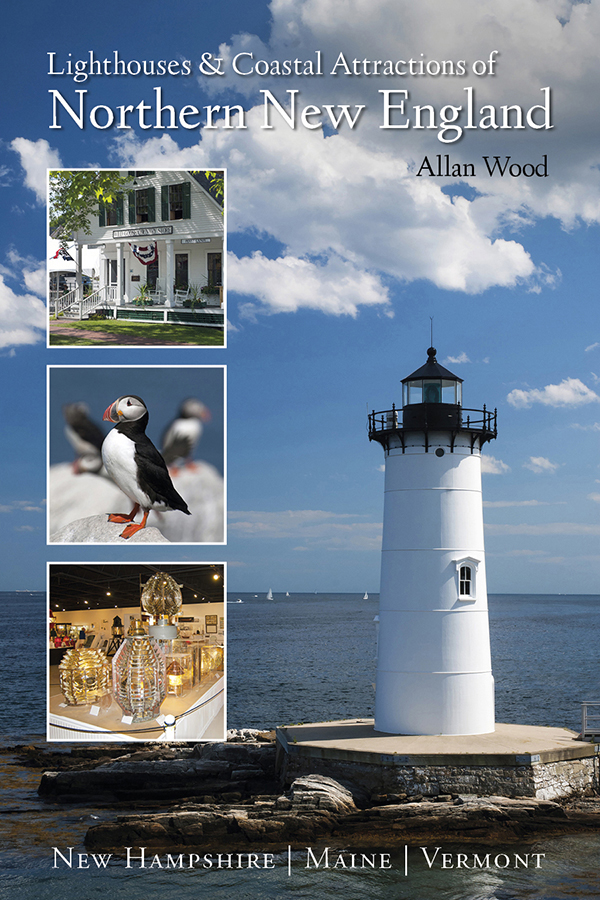Marshall Point Lighthouse
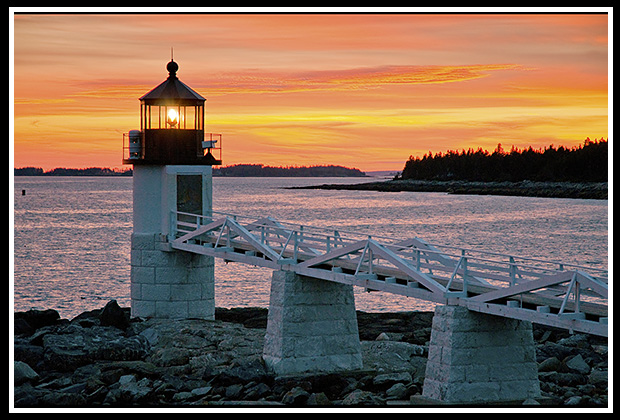
Port Clyde, Maine
Built in 1832
Location:
Marking the entrance to Port Clyde Harbor. The grounds, which also include the keeper’s house which is the current Marshall Point Lighthouse Museum, are open to the public. Visitors are also allowed to cross the walkway to the lighthouse.
Latitude: 43° 55' 03" N
Longitude: 69° 15' 41" W
Historic Stories:
In the 1800’s when Port Clyde became a busy shipping port for granite, timber, and fishing along with becoming a haven for writers and artists as it still is today, Marshall Point lighthouse was finally constructed in 1832 to accommodate traffic entering and leaving the harbor.
In the early morning hours of February 10, 1886, the steamer Cambridge was wrecked on a ledge nearby, and luckily the passengers and crew all made it to safety on Allen Island. They were later taken off by the steamer Dallas in the afternoon and brought to Rockland for care. As word got out that the vessel was in the process of breaking apart as a total loss, about 40 schooners of local fishermen went out to the wreck in the following days to salvage whatever cargo they could before it broke apart.
The keeper who served the station for the longest period was Charles Clement Skinner.
| He was a Civil War veteran who tended Marshall Point Light from 1874 to 1919. | 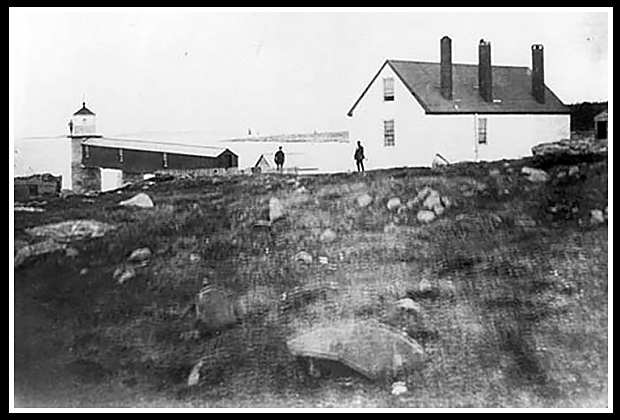 Vintage Image Courtesy US Coast Guard |
This became the longest tenure of a keeper at the same light in the Lighthouse Service history!
Of his six children, his two youngest daughters, Eula (1891-1993) and Marion (1895-1992) lived at or by the lighthouse during their entire extraordinary long lives. Marion lived her later years with her sister until her death in 1992.
In 1895 the original lighthouse was destroyed by lightning and was rebuilt in the same location.
In 1935, Marshall Point was converted to electricity, and was automated in 1971.
The lighthouse gained worldwide notoriety when it appeared in the 1994 movie Forrest Gump. It was the lighthouse Tom Hanks ran cross country to, then decided to turn around with his followers.
| Marshall Point light was known for having some of the most dramatic sunsets. | 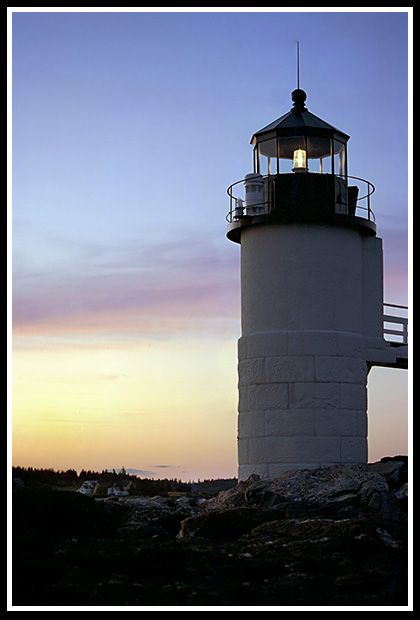
|
Often keepers who were stationed out in Monhegan Island, would trade places with the keepers of Marshall Point light who wanted a little more peace for a few days.
Places to Visit Nearby:
Port Clyde, Thomaston, and Tenants Harbor, along with their neighboring villages and towns are still predominantly fishing villages, where you’ll also find many artists galleries, beautiful sunsets overlooking their harbors, and where visitors will find the true Maine spirit. Over twenty-five artists in the town of St. George hold an annual Open Studio Tour each summer. Thomaston is an old seaport that is noted for its antique architecture. To view some of the local history of what occurred during the Revolution, visit the Henry Knox Museum.
Port Clyde is still a fishing village and an artists haven with many galleries to look at, and has beautiful sunsets overlooking the harbor. The area itself is picturesque and out of the way down a long peninsula to the village of Port Clyde offering activities like hiking, biking, fishing, kayaking, sailing and golf.
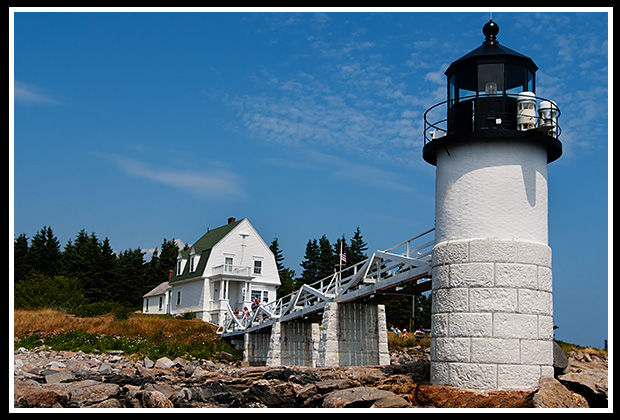 |
The Marshall Point Lighthouse Museum in the keeper's house and the grounds are open to the public. |
For those who are looking for a hands on education in marine life in the area, Herring Gut Learning Center is a non-profit marine education and resource center in Port Clyde.
The Monhegan Boat Line provides various nature tours and ferries tourists to Monhegan Island from the dock at Port Clyde. Port Clyde Kayaks offers tours around Marshall Point Lighthouse and the surrounding coastal area, and out to Pemaquid Point Light depending on your experience level. They also provide tours out to neighboring Georges Islands.
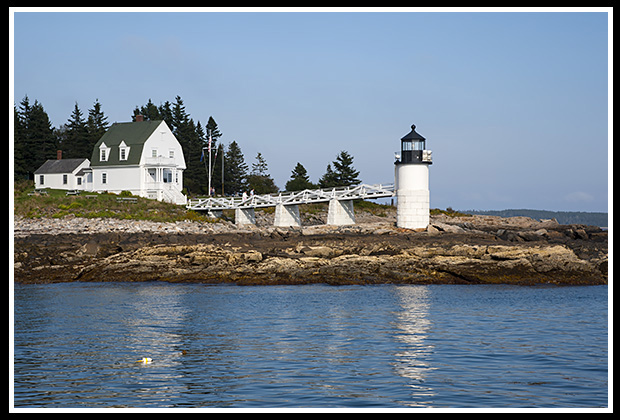
There is also the annual Mid Coast Maine Lighthouse Challenge usually in late June, put on by the American Lighthouse Foundation (headquarters at Owl’s Head keeper’s house), offering a chance to view up to seven lighthouses along the coast and providing special cruises out of Port Clyde.
Directions:
- From US Route 1 in Thomaston take Route 131 South to Port Clyde.
- At the main intersection turn left, then take a right immediately after the restaurant.
- The unmarked but paved Marshall Point Road will lead you a mile to a very small parking lot at Marshall Point Light.
Contact Info:
Marshall Point Lighthouse Museum
P.O. Box 247
Port Clyde, Maine 04855
Phone: (207) 372-6450
Local Boat Tours
Cruises mentioned below offer many types of cruises. Each provide special lighthouse cruises around Marshall Point Lighthouse.
Port Clyde Kayaks
Provide kayaking tours around Marshall Point Lighthouse and Muscongus Bay area.
Port Clyde, Maine
(207) 372-8100
Monhegan Boat Line
Ferry leaves out of Port Clyde to Monhegan Island, other tours also including a special local lighthouse tour. Provides great waterside views of the lighthouse.
P.O. Box 238
Port Clyde, Maine 04855
Tel: (207) 372-8848
Books to Explore
New England's Haunted Lighthouses: 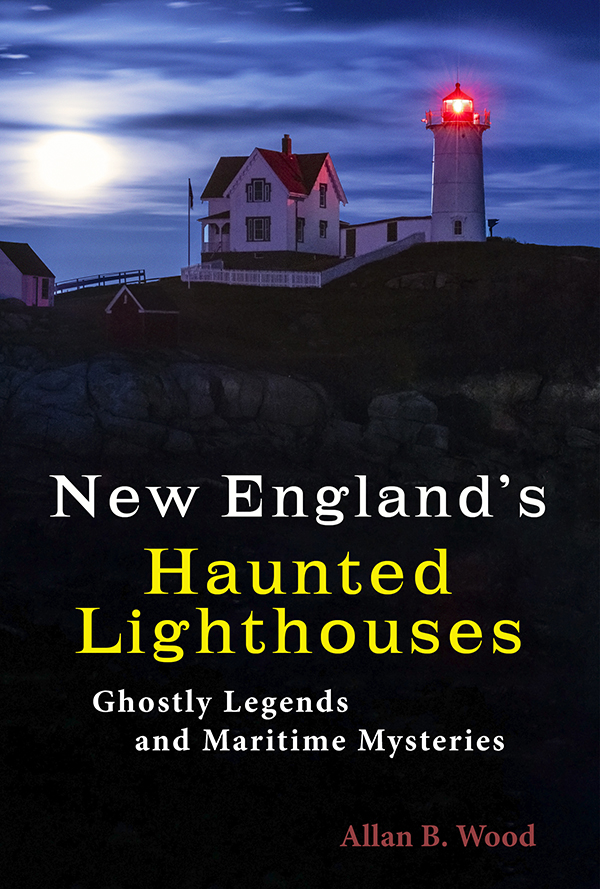
Available in paperback. |
Explore the historical mysteries surrounding the haunted lighthouses of New England! This image-rich book features ghost stories about spirits of devoted keepers who linger, victims of foul play or local shipwrecks, ghost ships, lost souls, and more, blending maritime history with the supernatural. Uncover the story about the running teenager spirit by Marshall Point Light. Explore the tales linked with these iconic beacons! |
Lighthouses and Coastal Attractions of Northern New England: This image-rich book provides human interest stories from each of the 76 lighthouses along this northern coastline, along with plenty of coastal attractions, and lighthouse and boat tours, near each beacon. Look inside! |
|
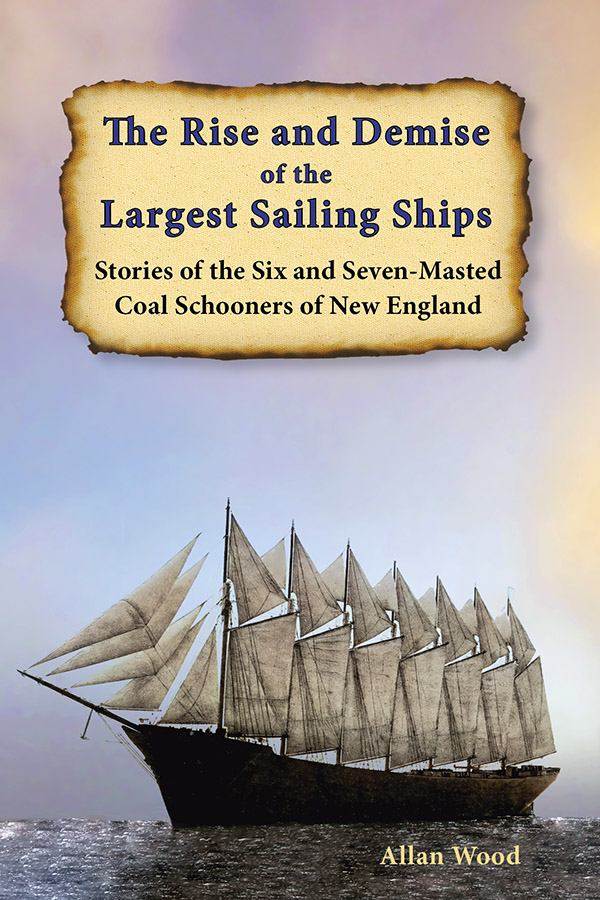
Available in paperback, hardcover, and as an eBook for all devices. |
The Rise and Demise of the Largest Sailing Ships: In the early 1900s, New England shipbuilders constructed the world’s largest sailing ships amid social and political reforms. These giants of sail were the ten original six-masted coal schooners and one colossal seven-masted vessel, built to carry massive quantities of coal and building supplies, and measured longer than a football field! This self-published book is balanced with plenty of color and vintage images, showcases the historical accounts that followed these mighty ships. These true stories include competitions, accidents, battling destructive storms, acts of heroism, and their final voyages. |

